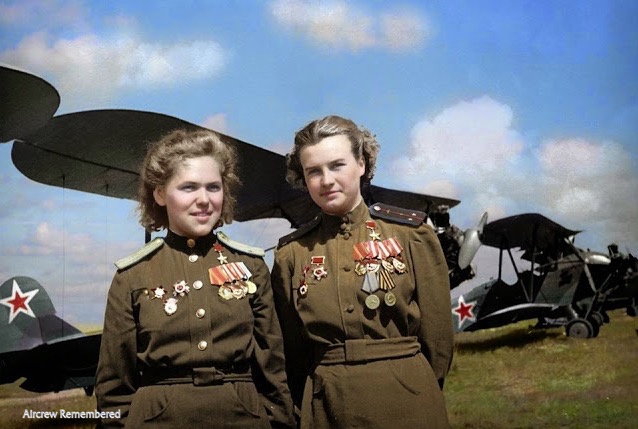The Night Witches were a group of female soldiers during World War Two of whom much is owed.
In 1942, there was an all-female battalion, 588th Night Bomber Regiment. These bombardiers belonged to the Soviet Air force.
According to the Wright Museum of World War 2, they were the all-women pilots of Russia’s 588th Night Bomber Aviation Regiment. In World War II, American women such as the WASPs supported the war by ferrying and testing planes. But the Night Witches were the first women military pilots in the 20th century to directly engage an enemy in combat. The pilots weren’t the only women in the 588th. All the members of the 588th were women, including the navigators, ground crews, and support staff.
The Night Witches were organized by Major Marina Raskova, who was essentially Russia’s equivalent to our Amelia Earhart. Women pilots, though, weren’t unusual in the Soviet Union. Flying was popular in the 1930s and thousands of women belonged to flying clubs. But when Germany invaded Russia in 1941, Russian women weren’t allowed in the Soviet Air Force even though they were allowed on the front lines in the army. Raskova received a slew of letters from women protesting the prohibition.
It has been reported by History.com that they flew under the cover of darkness in bare-bones plywood biplanes. They braved bullets and frostbite in the air while battling skepticism and sexual harassment on the ground. They were feared and hated so much by the Nazis that any German airman who downed one was automatically awarded the prestigious Iron Cross medal.
All told, the pioneering all-female 588th Night Bomber Regiment dropped more than 23,000 tons of bombs on Nazi targets. And in doing so, they became a crucial Soviet asset in winning World War II.
The Germans nicknamed them the Nachthexen, or “night witches,” because the whooshing noise their wooden planes made resembled that of a sweeping broom. “This sound was the only warning the Germans had. The planes were too small to show up on radar… [or] on infrared locators,” said Steve Prowse, author of the screenplay The Night Witches, a nonfiction account of the little-known female squadron. “They never used radios, so radio locators couldn’t pick them up either. They were basically ghosts.”
History.com went on to say that the Night Witches’ last flight took place on May 4, 1945—when they flew within 60 kilometers (approx. 37 miles) of Berlin. Three days later, Germany officially surrendered.
According to Prowse, the Germans had two theories about why these women were so successful: They were all criminals who were masters at stealing and had been sent to the front line as punishment—or they had been given special injections that allowed them to see in the night.
Altogether these daredevil heroines flew more than 30,000 missions in total or about 800 per pilot and navigator. They lost a total of 30 pilots, and 24 of the flyers were awarded the title Hero of the Soviet Union. Raskova, the mother of the movement, died on January 4, 1943, when she was finally sent to the front line—her plane never made it. She was given the very first state funeral of World War II and her ashes were buried in the Kremlin.
Despite being the most highly decorated unit in the Soviet Air Force during the war, the Night Witches regiment was disbanded six months after the end of World War II. And when it came to the big victory-day parade in Moscow, they weren’t included—because, it was decided, their planes were too slow.
Cite This Article
"Night Witches: The Saga Of The Women Warriors" History on the Net© 2000-2024, Salem Media.
July 27, 2024 <https://www.historyonthenet.com/night-witches-the-saga-of-the-women-warriors>
More Citation Information.






